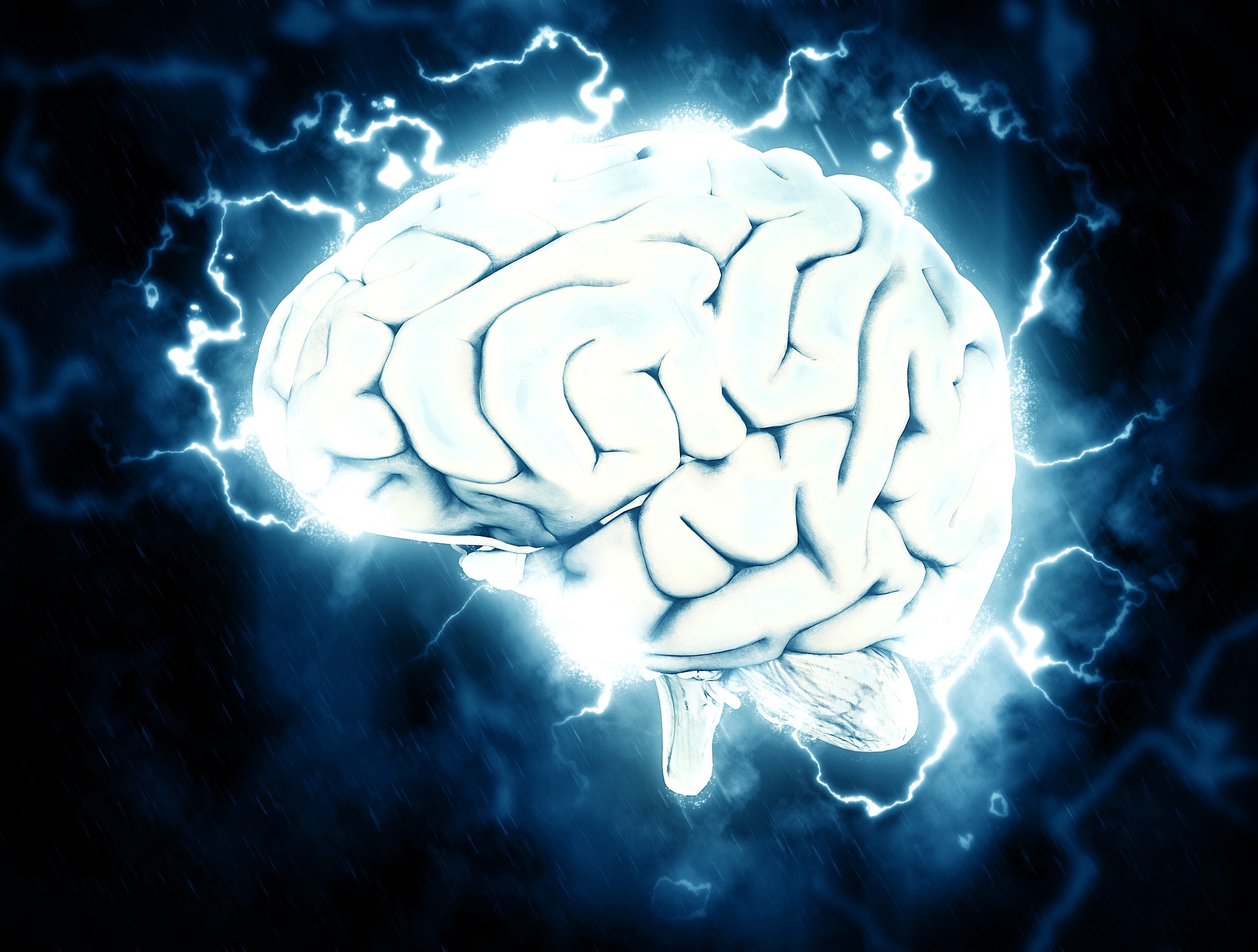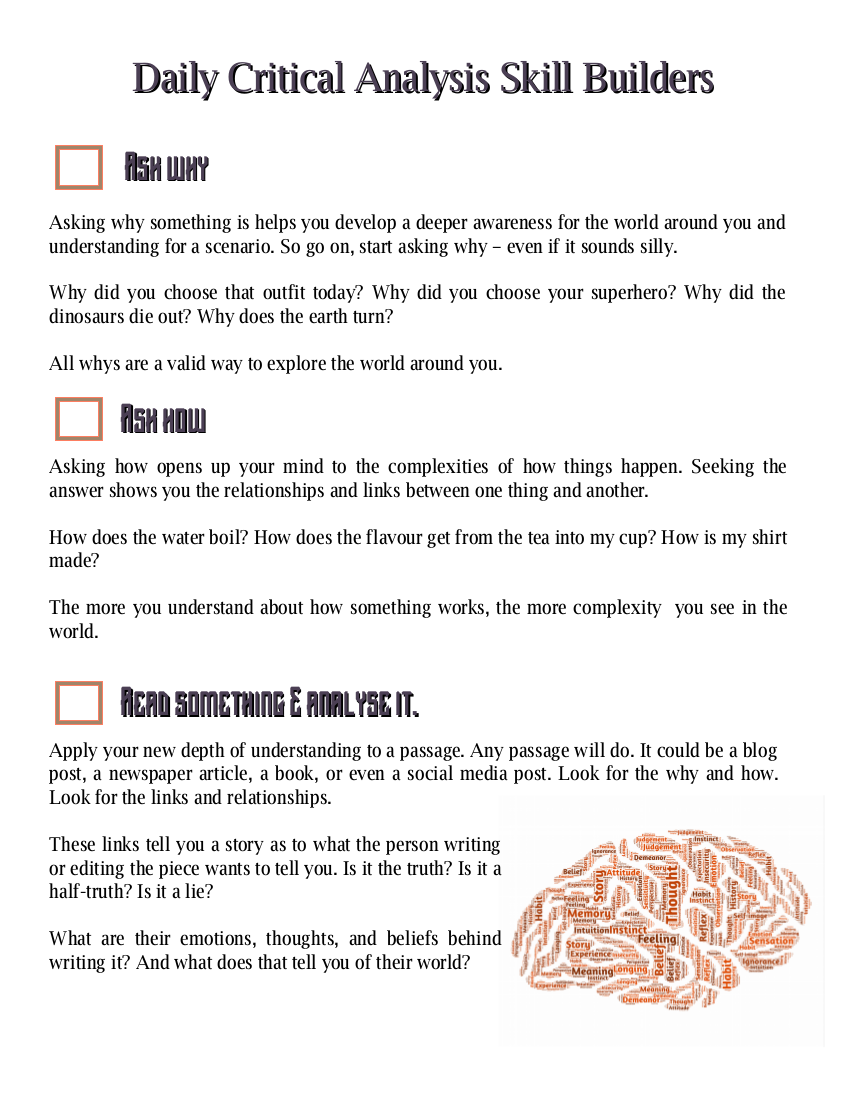We hear it all the time for the elderly: Exercise increases cognitive abilities and staves off Alzheimer’s. We hear that exercise makes us age more slowly over all.
But what about young people? What about people with ADHD or other cognitive “divergences.”
The answer, like everything else in science, is “it’s complicated,” but it’s also a yes – within certain rules.
Wait, what kind of cognitive abilities exactly?
We’re talking mostly executive function, which is a wide array of cognitive abilities. Everything from retaining information to reaction times on the basic level to holding ideas, manipulating them, then applying them to a wider range on more developed levels. According to Diamond’s review there are 3 core executive functions: Inhibition (self-control) which includes interference control (being able to pay attention), working memory, and cognitive flexibility.
Executive functions are what we employ when we organize a space to be more efficient and usable. For children it might mean they can find their socks and shoes on demand before you’re ready to leave – but it’s more likely they are going to bring you a toy that was top of the mind instead. This is an example of working memory gone awry because what you said was socks and shoes, but what they were thinking of was their favourite toy.
As children mature into toddler-hood, they might start to develop the prefrontal cortex, which would allow them to delay gratification for a greater reward – but only if trained. And most of us don’t train the little tyrants as they have a meltdown over using a specific spoon. Yet, this is a cognitive function that is important for managing the real world in their future – like waiting for a paycheck. Most of us struggle with self-control through our lives (sweets and junk food, anyone?), but we also have the ability to stop ourselves from doing something we’ll really regret.
Now, cognitive flexibility is when we start getting creative with ideas. No more parroting, and onto coming up with ideas on our own. This can be seeing patterns in the world, being able to connect the dots, as well as call a spade a spade when it comes to calling out BS. This is not the unintentional play of children, but rather the intentional problem solving of a matured brain.

How is all this tested?
Well, it would seem as if we make judgment calls in real life that give us an informal idea of where a person is on their cognitive abilities. But, in more recent times tests have been developed where a variety of cognitive abilities could be ascertained via computer .
These tests are designed to test 10 different tasks that our brains go through during during various different activities from initial learning to relearning and recall to reacting and tying together stimuli and an action. The 10 tests are:
- Learning
- Relearning
- Reaction time
- Stimulus discrimination
- Probe recall
- Self-paced probe recall
- Recognition memory
- Sternberg memory search
- Tachistoscopic threshold
- Tachistoscopic delay
These different tests look at the connection between the eyes, the brain, short term memory, longer term memory, reaction time, and connecting ideas. The research indicates that the faster the different parts work together, the faster the brain is clicking along well.
But what about those days when you stayed up too late and got up too early, and sip your empty cup 5 times before the coffee is even brewed?
Or wondered where you put your keys – while holding your keys.
Are these temporary or permanent slips?
Add an element of mindfulness in your activities to sharpen your brain!
 Mindfulness and critical thinking can sharpen the brain faster, and with this checklist you can add this twist simply to any activity during the day.
Mindfulness and critical thinking can sharpen the brain faster, and with this checklist you can add this twist simply to any activity during the day.
Exercise can help turn the sluggishness into snappy.
Ehem. So, first off please notice the word HELP. It’s not a cure all. It’s not some magic method. And, there is a point of diminishing returns.
Say it ain’t so?
Well, as Aristotle noted, everything in moderation.
The impact of physical exercise on the brain is two-fold. First, it helps our well being, no matter our age and activity levels. Former writer, Krystle Vermes, wrote a couple of articles on how diet and exercise can impact the brain, but those articles she referenced just barely scratch the surface and brought awareness back to the surface of society.
The research itself indicates that physical exercise – the type you’d do for training – is way more effective than just physical activity – the basic movements that require energy expenditure. The reason? When you’re using a structure and plan, it has two components. The first is that you’ve spent time to think about what moves to do that will bring about certain results. The second is that the effort is upped to a more intense level, allowing the different chemicals, hormones, and enzymes to cross the blood brain barrier easier.
That includes oxygen, caffeine, serotonin… all the good (and bad) things.
So, exercise can help alter the mood for the better. When we’re in a better mood, we perform better.
But what about training too hard?
You know it. It has diminishing returns.
While research hasn’t done on what really happens after on the microscopic level, we all know that after a great deal of exertion for an extended period of time, we are too exhausted to even think beyond the very, very basics.
And the research backs up that at acute levels of exercise for just short bursts, the blood brain barrier really gets the most “flood” of chemicals . That means exercise intensely to when you start to feel that lactic acid burn and your brain is starting to get those good juices flowing.
So walking the dog around the park is great physical activity that can boost the mood, but it’s not physical exercise which can maximize that sweet rush of endorphins that makes you think sharper. To get that, run with the pup for 10 minutes or just a little while after you feel the burn.
Over to you.
With just these few papers to back up the fact that exercise, not just physical activity is great for the brain and mood, let’s help each other out and think of ways we can actively integrate this into our lives. Sound off in the comments how you do this in your lives.
{21495:IFJ6BT35};{21495:YGTHB24L};{21495:IZ48BJH8};{21495:BITYGBPP}
apa
asc
0
12645
%7B%22status%22%3A%22success%22%2C%22updateneeded%22%3Afalse%2C%22instance%22%3A%22zotpress-4bbbccb68b3eaedce91640a7b336f0a9%22%2C%22meta%22%3A%7B%22request_last%22%3A0%2C%22request_next%22%3A0%2C%22used_cache%22%3Atrue%7D%2C%22data%22%3A%5B%7B%22key%22%3A%22BITYGBPP%22%2C%22library%22%3A%7B%22id%22%3A21495%7D%2C%22meta%22%3A%7B%22creatorSummary%22%3A%22Kashihara%20et%20al.%22%2C%22parsedDate%22%3A%222009%22%2C%22numChildren%22%3A1%7D%2C%22bib%22%3A%22%3Cdiv%20class%3D%5C%22csl-bib-body%5C%22%20style%3D%5C%22line-height%3A%202%3B%20padding-left%3A%201em%3B%20text-indent%3A-1em%3B%5C%22%3E%5Cn%20%20%3Cdiv%20class%3D%5C%22csl-entry%5C%22%3EKashihara%2C%20K.%2C%20Maruyama%2C%20T.%2C%20Murota%2C%20M.%2C%20%26amp%3B%20Nakahara%2C%20Y.%20%282009%29.%20Positive%20Effects%20of%20Acute%20and%20Moderate%20Physical%20Exercise%20on%20Cognitive%20Function.%20%3Ci%3EJournal%20of%20PHYSIOLOGICAL%20ANTHROPOLOGY%3C%5C%2Fi%3E%2C%20%3Ci%3E28%3C%5C%2Fi%3E%284%29%2C%20155%26%23x2013%3B164.%20%3Ca%20href%3D%27https%3A%5C%2F%5C%2Fdoi.org%5C%2F10.2114%5C%2Fjpa2.28.155%27%3Ehttps%3A%5C%2F%5C%2Fdoi.org%5C%2F10.2114%5C%2Fjpa2.28.155%3C%5C%2Fa%3E%3C%5C%2Fdiv%3E%5Cn%3C%5C%2Fdiv%3E%22%2C%22data%22%3A%7B%22itemType%22%3A%22journalArticle%22%2C%22title%22%3A%22Positive%20Effects%20of%20Acute%20and%20Moderate%20Physical%20Exercise%20on%20Cognitive%20Function%22%2C%22creators%22%3A%5B%7B%22creatorType%22%3A%22author%22%2C%22firstName%22%3A%22Koji%22%2C%22lastName%22%3A%22Kashihara%22%7D%2C%7B%22creatorType%22%3A%22author%22%2C%22firstName%22%3A%22Takeo%22%2C%22lastName%22%3A%22Maruyama%22%7D%2C%7B%22creatorType%22%3A%22author%22%2C%22firstName%22%3A%22Masao%22%2C%22lastName%22%3A%22Murota%22%7D%2C%7B%22creatorType%22%3A%22author%22%2C%22firstName%22%3A%22Yoshibumi%22%2C%22lastName%22%3A%22Nakahara%22%7D%5D%2C%22abstractNote%22%3A%22%22%2C%22date%22%3A%222009%22%2C%22language%22%3A%22en%22%2C%22DOI%22%3A%2210.2114%5C%2Fjpa2.28.155%22%2C%22ISSN%22%3A%221880-6805%2C%201880-6791%22%2C%22url%22%3A%22http%3A%5C%2F%5C%2Fwww.jstage.jst.go.jp%5C%2Farticle%5C%2Fjpa2%5C%2F28%5C%2F4%5C%2F28_4_155%5C%2F_article%22%2C%22collections%22%3A%5B%2245CMI76K%22%5D%2C%22dateModified%22%3A%222023-02-24T19%3A29%3A35Z%22%7D%7D%2C%7B%22key%22%3A%22IZ48BJH8%22%2C%22library%22%3A%7B%22id%22%3A21495%7D%2C%22meta%22%3A%7B%22creatorSummary%22%3A%22Mandolesi%20et%20al.%22%2C%22parsedDate%22%3A%222018-04-27%22%2C%22numChildren%22%3A1%7D%2C%22bib%22%3A%22%3Cdiv%20class%3D%5C%22csl-bib-body%5C%22%20style%3D%5C%22line-height%3A%202%3B%20padding-left%3A%201em%3B%20text-indent%3A-1em%3B%5C%22%3E%5Cn%20%20%3Cdiv%20class%3D%5C%22csl-entry%5C%22%3EMandolesi%2C%20L.%2C%20Polverino%2C%20A.%2C%20Montuori%2C%20S.%2C%20Foti%2C%20F.%2C%20Ferraioli%2C%20G.%2C%20Sorrentino%2C%20P.%2C%20%26amp%3B%20Sorrentino%2C%20G.%20%282018%29.%20Effects%20of%20Physical%20Exercise%20on%20Cognitive%20Functioning%20and%20Wellbeing%3A%20Biological%20and%20Psychological%20Benefits.%20%3Ci%3EFrontiers%20in%20Psychology%3C%5C%2Fi%3E%2C%20%3Ci%3E9%3C%5C%2Fi%3E%2C%20509.%20%3Ca%20href%3D%27https%3A%5C%2F%5C%2Fdoi.org%5C%2F10.3389%5C%2Ffpsyg.2018.00509%27%3Ehttps%3A%5C%2F%5C%2Fdoi.org%5C%2F10.3389%5C%2Ffpsyg.2018.00509%3C%5C%2Fa%3E%3C%5C%2Fdiv%3E%5Cn%3C%5C%2Fdiv%3E%22%2C%22data%22%3A%7B%22itemType%22%3A%22journalArticle%22%2C%22title%22%3A%22Effects%20of%20Physical%20Exercise%20on%20Cognitive%20Functioning%20and%20Wellbeing%3A%20Biological%20and%20Psychological%20Benefits%22%2C%22creators%22%3A%5B%7B%22creatorType%22%3A%22author%22%2C%22firstName%22%3A%22Laura%22%2C%22lastName%22%3A%22Mandolesi%22%7D%2C%7B%22creatorType%22%3A%22author%22%2C%22firstName%22%3A%22Arianna%22%2C%22lastName%22%3A%22Polverino%22%7D%2C%7B%22creatorType%22%3A%22author%22%2C%22firstName%22%3A%22Simone%22%2C%22lastName%22%3A%22Montuori%22%7D%2C%7B%22creatorType%22%3A%22author%22%2C%22firstName%22%3A%22Francesca%22%2C%22lastName%22%3A%22Foti%22%7D%2C%7B%22creatorType%22%3A%22author%22%2C%22firstName%22%3A%22Giampaolo%22%2C%22lastName%22%3A%22Ferraioli%22%7D%2C%7B%22creatorType%22%3A%22author%22%2C%22firstName%22%3A%22Pierpaolo%22%2C%22lastName%22%3A%22Sorrentino%22%7D%2C%7B%22creatorType%22%3A%22author%22%2C%22firstName%22%3A%22Giuseppe%22%2C%22lastName%22%3A%22Sorrentino%22%7D%5D%2C%22abstractNote%22%3A%22%22%2C%22date%22%3A%222018-4-27%22%2C%22language%22%3A%22%22%2C%22DOI%22%3A%2210.3389%5C%2Ffpsyg.2018.00509%22%2C%22ISSN%22%3A%221664-1078%22%2C%22url%22%3A%22http%3A%5C%2F%5C%2Fjournal.frontiersin.org%5C%2Farticle%5C%2F10.3389%5C%2Ffpsyg.2018.00509%5C%2Ffull%22%2C%22collections%22%3A%5B%2245CMI76K%22%5D%2C%22dateModified%22%3A%222023-02-23T22%3A52%3A50Z%22%7D%7D%2C%7B%22key%22%3A%22YGTHB24L%22%2C%22library%22%3A%7B%22id%22%3A21495%7D%2C%22meta%22%3A%7B%22creatorSummary%22%3A%22Douglas%20K%20Detterman%22%2C%22parsedDate%22%3A%221989-05-14%22%2C%22numChildren%22%3A0%7D%2C%22bib%22%3A%22%3Cdiv%20class%3D%5C%22csl-bib-body%5C%22%20style%3D%5C%22line-height%3A%202%3B%20padding-left%3A%201em%3B%20text-indent%3A-1em%3B%5C%22%3E%5Cn%20%20%3Cdiv%20class%3D%5C%22csl-entry%5C%22%3EDouglas%20K%20Detterman.%20%281989%29.%20%3Ci%3EModels%20of%20Mental%20Functioning%3C%5C%2Fi%3E%20%28Final%20No.%20AFOSR%20RD%2089-0813%29.%20Air%20Force%20Office%20of%20Scientific%20Research.%3C%5C%2Fdiv%3E%5Cn%3C%5C%2Fdiv%3E%22%2C%22data%22%3A%7B%22itemType%22%3A%22report%22%2C%22title%22%3A%22Models%20of%20Mental%20Functioning%22%2C%22creators%22%3A%5B%7B%22creatorType%22%3A%22author%22%2C%22firstName%22%3A%22%22%2C%22lastName%22%3A%22Douglas%20K%20Detterman%22%7D%5D%2C%22abstractNote%22%3A%22%22%2C%22reportNumber%22%3A%22AFOSR%20RD%2089-0813%22%2C%22reportType%22%3A%22Final%22%2C%22institution%22%3A%22Air%20Force%20Office%20of%20Scientific%20Research%22%2C%22date%22%3A%221989%20May%2014%22%2C%22language%22%3A%22%22%2C%22url%22%3A%22%22%2C%22collections%22%3A%5B%2245CMI76K%22%5D%2C%22dateModified%22%3A%222023-02-22T20%3A03%3A15Z%22%7D%7D%2C%7B%22key%22%3A%22IFJ6BT35%22%2C%22library%22%3A%7B%22id%22%3A21495%7D%2C%22meta%22%3A%7B%22creatorSummary%22%3A%22Diamond%22%2C%22parsedDate%22%3A%222013-01-03%22%2C%22numChildren%22%3A1%7D%2C%22bib%22%3A%22%3Cdiv%20class%3D%5C%22csl-bib-body%5C%22%20style%3D%5C%22line-height%3A%202%3B%20padding-left%3A%201em%3B%20text-indent%3A-1em%3B%5C%22%3E%5Cn%20%20%3Cdiv%20class%3D%5C%22csl-entry%5C%22%3EDiamond%2C%20A.%20%282013%29.%20Executive%20Functions.%20%3Ci%3EAnnual%20Review%20of%20Psychology%3C%5C%2Fi%3E%2C%20%3Ci%3E64%3C%5C%2Fi%3E%281%29%2C%20135%26%23x2013%3B168.%20%3Ca%20href%3D%27https%3A%5C%2F%5C%2Fdoi.org%5C%2F10.1146%5C%2Fannurev-psych-113011-143750%27%3Ehttps%3A%5C%2F%5C%2Fdoi.org%5C%2F10.1146%5C%2Fannurev-psych-113011-143750%3C%5C%2Fa%3E%3C%5C%2Fdiv%3E%5Cn%3C%5C%2Fdiv%3E%22%2C%22data%22%3A%7B%22itemType%22%3A%22journalArticle%22%2C%22title%22%3A%22Executive%20Functions%22%2C%22creators%22%3A%5B%7B%22creatorType%22%3A%22author%22%2C%22firstName%22%3A%22Adele%22%2C%22lastName%22%3A%22Diamond%22%7D%5D%2C%22abstractNote%22%3A%22Executive%20functions%20%28EFs%29%20make%20possible%20mentally%20playing%20with%20ideas%3B%20taking%20the%20time%20to%20think%20before%20acting%3B%20meeting%20novel%2C%20unanticipated%20challenges%3B%20resisting%20temptations%3B%20and%20staying%20focused.%20Core%20EFs%20are%20inhibition%20%5Bresponse%20inhibition%20%28self-control%5Cu2014resisting%20temptations%20and%20resisting%20acting%20impulsively%29%20and%20interference%20control%20%28selective%20attention%20and%20cognitive%20inhibition%29%5D%2C%20working%20memory%2C%20and%20cognitive%20flexibility%20%28including%20creatively%20thinking%20%5Cu201coutside%20the%20box%2C%5Cu201d%20seeing%20anything%20from%20different%20perspectives%2C%20and%20quickly%20and%20flexibly%20adapting%20to%20changed%20circumstances%29.%20The%20developmental%20progression%20and%20representative%20measures%20of%20each%20are%20discussed.%20Controversies%20are%20addressed%20%28e.g.%2C%20the%20relation%20between%20EFs%20and%20fluid%20intelligence%2C%20self-regulation%2C%20executive%20attention%2C%20and%20effortful%20control%2C%20and%20the%20relation%20between%20working%20memory%20and%20inhibition%20and%20attention%29.%20The%20importance%20of%20social%2C%20emotional%2C%20and%20physical%20health%20for%20cognitive%20health%20is%20discussed%20because%20stress%2C%20lack%20of%20sleep%2C%20loneliness%2C%20or%20lack%20of%20exercise%20each%20impair%20EFs.%20That%20EFs%20are%20trainable%20and%20can%20be%20improved%20with%20practice%20is%20addressed%2C%20including%20diverse%20methods%20tried%20thus%20far.%22%2C%22date%22%3A%222013-01-03%22%2C%22language%22%3A%22en%22%2C%22DOI%22%3A%2210.1146%5C%2Fannurev-psych-113011-143750%22%2C%22ISSN%22%3A%220066-4308%2C%201545-2085%22%2C%22url%22%3A%22https%3A%5C%2F%5C%2Fwww.annualreviews.org%5C%2Fdoi%5C%2F10.1146%5C%2Fannurev-psych-113011-143750%22%2C%22collections%22%3A%5B%2245CMI76K%22%5D%2C%22dateModified%22%3A%222023-01-20T15%3A41%3A28Z%22%7D%7D%5D%7D
Kashihara, K., Maruyama, T., Murota, M., & Nakahara, Y. (2009). Positive Effects of Acute and Moderate Physical Exercise on Cognitive Function.
Journal of PHYSIOLOGICAL ANTHROPOLOGY,
28(4), 155–164.
https://doi.org/10.2114/jpa2.28.155
Mandolesi, L., Polverino, A., Montuori, S., Foti, F., Ferraioli, G., Sorrentino, P., & Sorrentino, G. (2018). Effects of Physical Exercise on Cognitive Functioning and Wellbeing: Biological and Psychological Benefits.
Frontiers in Psychology,
9, 509.
https://doi.org/10.3389/fpsyg.2018.00509
Douglas K Detterman. (1989). Models of Mental Functioning (Final No. AFOSR RD 89-0813). Air Force Office of Scientific Research.
Diamond, A. (2013). Executive Functions.
Annual Review of Psychology,
64(1), 135–168.
https://doi.org/10.1146/annurev-psych-113011-143750

 Mindfulness and critical thinking can sharpen the brain faster, and with this checklist you can add this twist simply to any activity during the day.
Mindfulness and critical thinking can sharpen the brain faster, and with this checklist you can add this twist simply to any activity during the day.